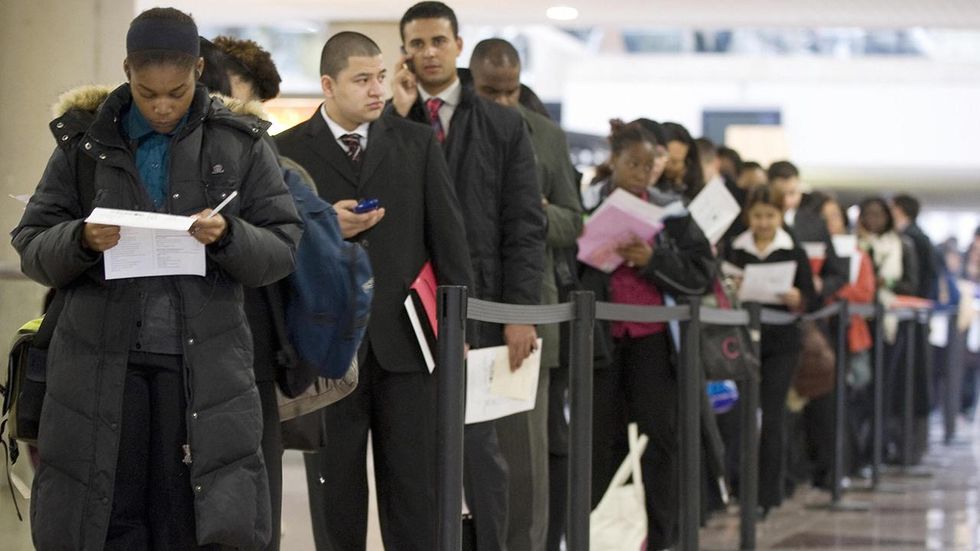
The national unemployment rate now stands at 3.9 percent, the lowest level in nearly two decades, according to U.S. Labor Department figures for April. (2009 file photo/Don Emmert/Getty Images)

The national unemployment rate now stands at 3.9 percent, the lowest level in nearly two decades, according to U.S. Labor Department figures for April.
A major driver behind the lower unemployment number was that a large number of Americans have exited the workforce: labor force participation was at 63 percent, close to its lowest level since the 1970s and unchanged since the start of 2018.
During his 2016 campaign, President Donald Trump raised questions about the validity of the official unemployment rate because it fails to account for people who have dropped out of the workforce.
About 164,000 jobs were added in April, which was significantly lower than the expected increase of 192,000. That compares to 135,000 jobs added in March, Politico reported.
Average hourly private-sector wages were 2.6 percent higher than April of the previous year, and about the same level as March. The figure does not reflect the annual inflation rate of slightly over 2 percent.
In October, the White House Council of Economic Advisers predicted the tax bill would boost the average household income by at least $4,000.
Now that seems like a questionable goal.
“There is still a lot of thinking on the right that if big corporations are happy, they’re going to take the money they’re saving and reinvest it in American workers,” Sen. Marco Rubio (R.-Fla.) told The Economist this week. "In fact, they bought back shares, a few gave out bonuses; there’s no evidence whatsoever that the money’s been massively poured back into the American worker."
Rubio later updated his comments to say he was referring to the tax bill's corporate rate cuts and not cuts to personal rates.
The wages increase in April was weak, but some economists predict wages will continue to grow later this year as the labor market tightens, Politico reported.
"We do expect wages to accelerate throughout the year, gradually," said Jeremy Schwartz, vice president of economics at Credit Suisse. "There's just more money to go around."
The tax cuts have not boosted economic growth as high as what was predicted, Politico reported. Last week, the Commerce Department reported that the gross domestic product grew 2.3 percent in the first quarter of 2018. That compares to 2.9 percent for the last quarter of 2017.
An increase in wage growth would likely encourage Jerome Powell, the new Federal Reserve chairman, to increase interest rates, reports state. That’s a consideration that will likely be considered during the Federal Open Market Committee meeting June 12-13.
In all, the statistics are expected to be good news for President Donald Trump and Republicans moving into the upcoming summer campaign blitz, reports state.